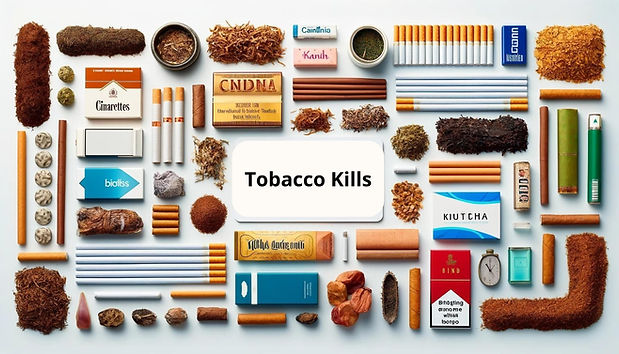World No Tobacco Day 2024
31 May
Theme - Protecting Children from tobacco Industry interference
World No Tobacco Day 2024 will give a platform to young people across the world, who are urging governments to shield them from predatory tobacco marketing tactics. The industry targets youth for a lifetime of profits, creating a new wave of addiction. Children are using e-cigarettes at rates higher than adults in all regions and globally an estimated 37 million youth aged 13–15 years use tobacco.

Tobacco industry tactics to influence public health policies
The World Health Organization (WHO) has launched the "Stop the Lies" campaign to protect young people from the tobacco industry's harmful influence. Supported by findings from “The Global Tobacco Industry Interference Index 2023”, the campaign highlights the increasing interference of the tobacco industry in health policies worldwide. WHO's initiative aims to amplify youth voices, expose industry tactics, and raise public awareness to defend health policies and future generations' health.
Youth groups globally urge countries to adopt measures against manipulative practices by the tobacco industry. WHO's Director of Health Promotion, Dr. Ruediger Krech, emphasized the need to exclude the industry from policy-making. The tobacco industry employs various methods to spread misinformation and influence policies, including using front groups, social media influencers, sponsored events, biased research, and corporate social responsibility initiatives.
The industry continues to target young people with misleading marketing of supposedly ‘safer’ products. Despite knowing the severe health risks, the industry persists in its efforts to recruit new users. WHO calls for firm action against tobacco industry influence to prevent further public health harm and address related issues like environmental damage, mental health, and child labor.

Key Facts
-
Tobacco kills up to half of its users who don’t quit (1-3).
-
Tobacco kills more than 8 million people each year, including an estimated 1.3 million non-smokers who are exposed to second-hand smoke (4).
-
Around 80% of the world's 1.3 billion tobacco users live in low- and middle-income countries.
-
In 2020, 22.3% of the world’s population used tobacco: 36.7% of men and 7.8% of women.
-
To address the tobacco epidemic, WHO Member States adopted the WHO Framework Convention on Tobacco Control (WHO FCTC) in 2003. Currently 182 countries are Parties to this treaty.
-
The WHO MPOWER measures are in line with the WHO FCTC and have been shown to save lives and reduce costs from averted healthcare expenditure.
Tobacco use in India
In 2022, India’s population reached 1.42 billion. According to the 2016-17 Global Adult Tobacco Survey (GATS), about 29% of individuals aged 15 and older used tobacco – over 42% of males and more than 14% of females. This equates to nearly 267 million tobacco users in this age group. In the 2019 Global Youth Tobacco Survey (GYTS), 8.5% of adolescents aged 13 to 15 reported using tobacco, with almost 10% of males and over 7% of females.
The most commonly used tobacco product among Indian smokers is bidis, which are hand-rolled in tendu leaves. About 7.7% of adults smoked bidis, while 4% smoked factory-made cigarettes. However, the predominant tobacco product in India is smokeless tobacco (SLT). Over 21% of adults reported using SLT, compared to less than 11% who smoked any form of cigarettes or bidis. Notably, SLT use is significant among women and girls, with nearly 13% of females aged 15 and older using SLT compared to 2% who smoked. In low- and middle-income countries like India and Bangladesh, most female tobacco users prefer SLT. Among adolescents, smoking is more prevalent than SLT use, with over 7% currently smoking and just over 4% using SLT.
India has the second highest number of oral cancer cases worldwide, accounting for one-third of the global total. Over 90% of these cases are caused by tobacco use, with more than half attributed to SLT. The poor and less educated populations are most affected, with higher prevalence rates of SLT use. In 2019, smoking-related deaths exceeded one million, representing nearly 11% of all deaths in India that year.
A study in 2020 estimated the economic cost of illness and death due to tobacco use for those over 35 years old between 2017 and 2018 at $27.5 billion. Smoking accounted for 74% of these costs, while SLT accounted for 26%. Direct medical expenses constituted 5.3% of total health expenditure. However, excise tax revenue from tobacco in the previous year was only 12.2% of these economic costs. This means the economic burden of tobacco use is more than eight times the revenue generated from tobacco taxes, representing over 1% of India’s GDP.
Join the campaign to make a tobacco free future
Programs
WNTD Toolkit
Campaign Materials
Learn how tobacco is impacting us








